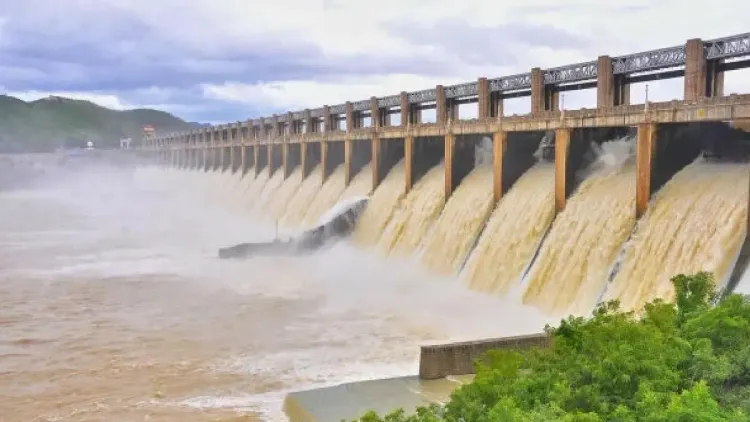Has TN's Mettur Dam Experienced a Dramatic Water Level Rise?

Synopsis
Key Takeaways
- Current water storage at Mettur Dam is 81,983 mcft.
- 87.71% of dam capacity is filled.
- Comparison with last year shows a dramatic increase.
- Farmers look forward to increased irrigation opportunities.
- Flood preparedness measures have been initiated by WRD.
Chennai, June 3 (NationPress) The Stanley Reservoir in Mettur, commonly referred to as the Mettur Dam, which serves as a vital resource for millions in Tamil Nadu, has experienced an impressive surge in water levels this year, attributed to the consistent rainfall from the southwest monsoon.
As of June 2, the dam is currently holding 81,983 million cubic feet (mcft) of water -- 87.71% of its total capacity of 93,470 mcft. This indicates a remarkable increase compared to the same timeframe last year, when the storage level was merely 15,632 mcft, equating to only 16.72% of its full capacity.
Officials from the Water Resources Department (WRD) noted that the current storage is among the highest recorded in the past six years, second only to 2022 when the reservoir peaked at 89,431 mcft, or 95.68% of its capacity.
The WRD disclosed that Tamil Nadu received 305 thousand million cubic feet (tmcft) of Cauvery water from Karnataka in the previous water year, from June 1, 2024, to May 31, 2025. This is 128 tmcft more than the 177 tmcft mandated by the Supreme Court, reflecting enhanced water availability in the upstream reservoirs of Karnataka.
Chief Engineer R. Dhayalakumar of the WRD (Tiruchy division) confirmed that the inflow from Karnataka’s key reservoirs -- Krishna Raja Sagar, Kabini, Harangi, and Hemavathy -- is significantly improved compared to the same period last year.
“The inflow into the Mettur Dam stands at 3,017 cusecs, with 1,000 cusecs being released for drinking water purposes,” Dhayalakumar stated.
He also confirmed that the dam’s shutters are scheduled to be opened for irrigation on June 12, providing much-needed relief to farmers reliant on Cauvery irrigation.
In anticipation of rising water levels and potential heavy rainfall upstream, the WRD officials have initiated flood preparedness measures. Over the past month, the dam has consistently increased its storage.
On May 1, the water level was at 75,250 mcft (or 80.51% of its capacity). Since then, the reservoir has gained 6,733 mcft, now reaching 81,983 mcft -- a positive trend that boosts hopes for a fruitful agricultural season. Farmers are optimistic about receiving sufficient water for their crops.










